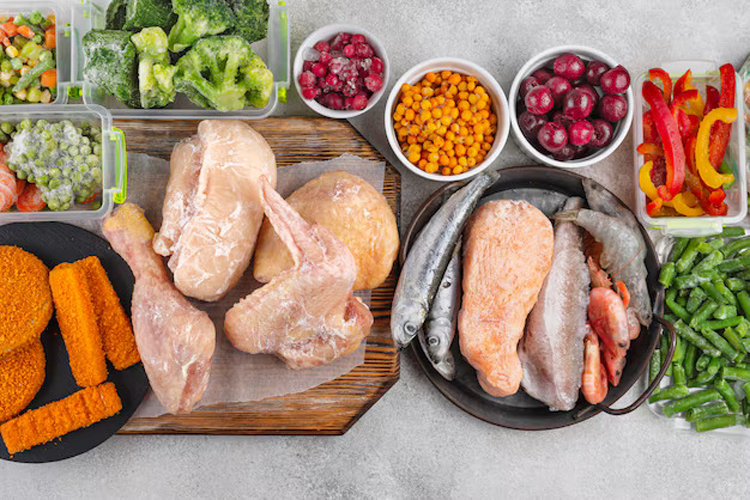
Frozen items refer to food products and other perishable goods that have been preserved at low temperatures to extend their shelf life and maintain quality. These items include frozen fruits, vegetables, meats, seafood, dairy products, ready-to-eat meals, and desserts such as ice cream. Freezing slows down bacterial growth and enzymatic activity, preventing spoilage while retaining the nutritional value, taste, and texture of the food. Proper storage of frozen items requires maintaining a consistent temperature, typically at or below 0°F (-18°C), to ensure safety and quality. Many frozen foods undergo processes like flash freezing, which helps preserve their freshness and prevent ice crystal formation. Consumers benefit from frozen items as they offer convenience, reduce food waste, and provide access to seasonal foods year-round. However, it is essential to follow proper thawing methods and avoid refreezing thawed products to maintain food safety.